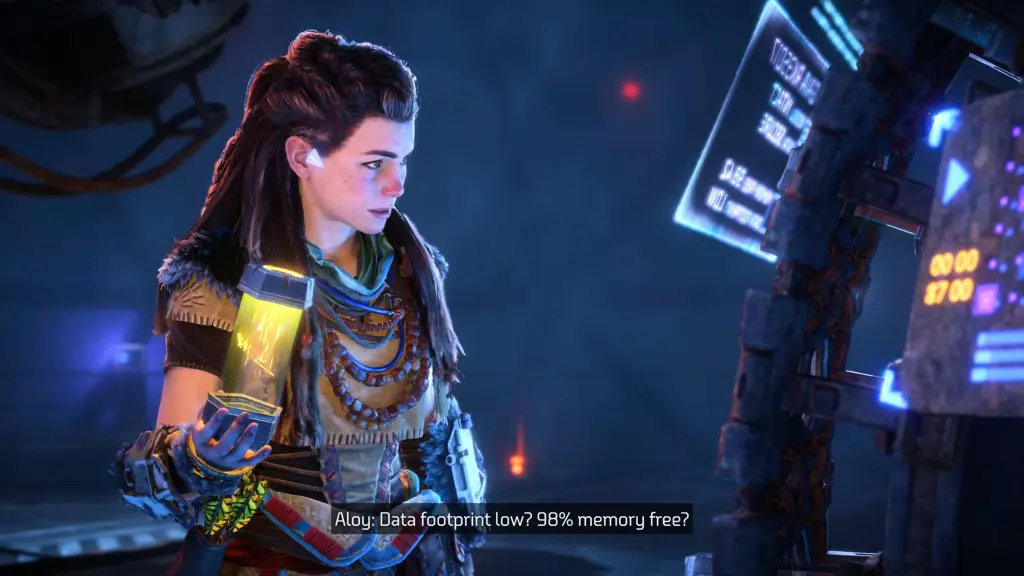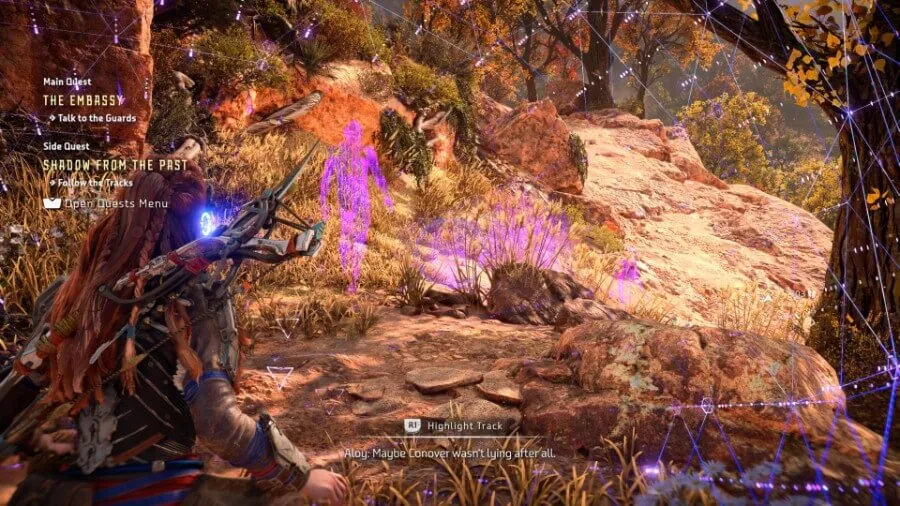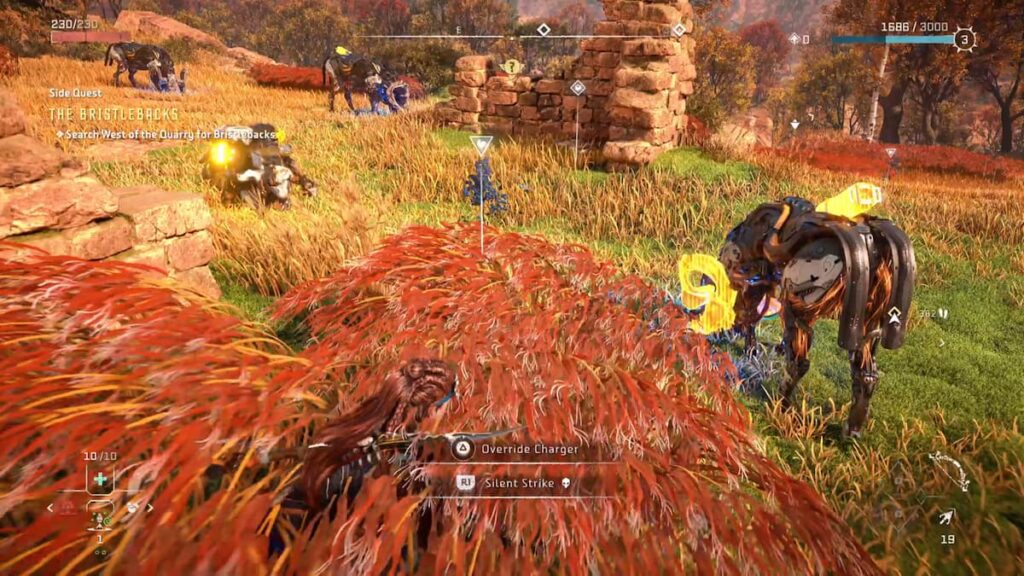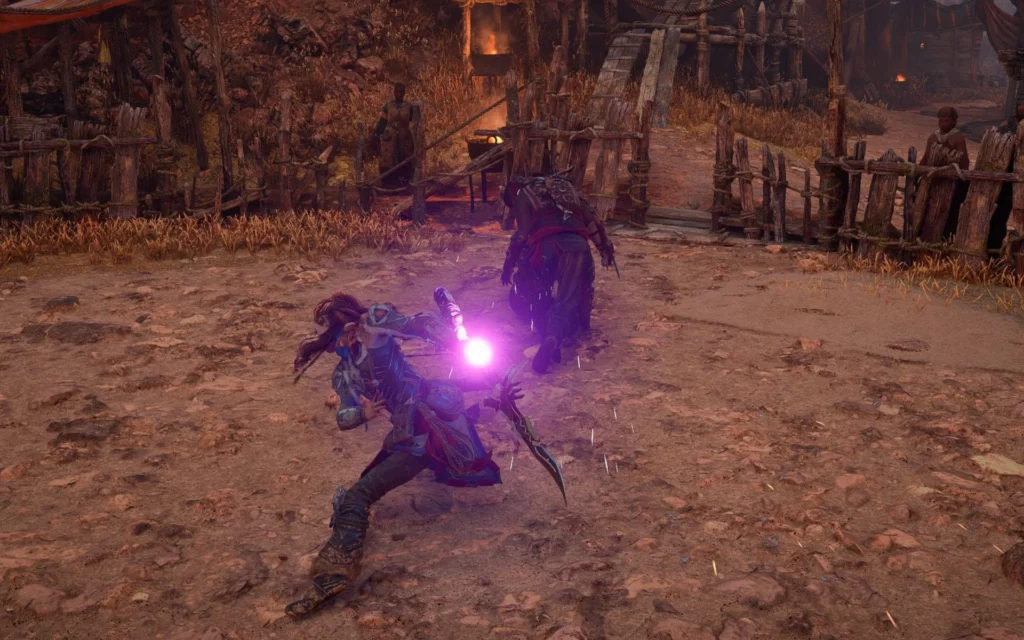_Horizon Forbidden West is apparently considered one of the new contenders for best Accessibility in Games for the year 2022; and since I had the opportunity to get my hands onto that game, I’d say it’s time for a little case study of my own. Also, this game runs on the same Engine which made DEATH STRANDING possible, but a different Studio. Since I kind of already evaluated this other game, I was curious how they did it, giving the fact that DEATH STRANDING didn’t do that well. When I booted it Horizon for the first time, I immediately noticed one of the big points in the main menu – ACCESSIBILITY – and I was curious, which and how good their Accessibility measures & efforts were.

I took a quick gander over their accessibility options and was generally impressed by their efforts in the first moments. Scrolling through the different modifications, I headed to the menu points I always search up every time I start a new game, to language and subtitles. Generally, am I interested in which languages (audio/video) that game is available and how the default subtitles are set up.

Straight of the bat, the default subtitles are quite hard to read – small, white, and mostly on bright backgrounds. You can though, change them quite easily to a slightly larger version with also a black background – but there is still room for improvement.


Staying with graphic settings; in the game there is a mechanic called “using the Focus”, meaning that you can press a button to enable an ‘virtual’ overlay in the game world to highlight important objects or crucial information. In this universe, the “Focus” is a little apparatus which sits on your temple (close to your ear, where all your four skull bones join) and projects some sort of augmented reality view into your sight. This is a nice concept, but poorly executed in my opinion. What it does, is it brings a pinkish overlay – which is not changeable from the get-go – to everything in the game world to show said information. In the end, it has small and hard to see icons and often it takes me more time to differentiate what is important or just pinkish noise accidently misinterpreted by my eyes as crucial data. In the first game there was this option after finishing the game to unlock new styles for said focus, so you could change the colour schemes to your liking – or to better say, needs. Such an accessibility option should not be locked away behind the barrier of ‘finishing the game’.

While talking about the functions of the game mechanic Focus, one other use of it while combat – or should I say strictly before engaging/combat, that’s what bothers me – is to plot our plan to engage and attack your enemies. You look at their walking patters, their strengths and weaknesses, the works. But this is inherently where the problem; often you are faced with a vast array of different foes, which all have different ways to be brought down efficiently. So, you often must, in the middle of stressful combat, enter the focus view to see the enemies’ weaknesses. This context info is there to make it easier for you, but ultimately it either annoys you the get a hold of this information, you struggle to get a quick glance, or it rips you completely out of the fight/immersion; because you pressed the touch bar fast enough to open your enemy database overlay menu. Now you can, in all silence and peace read everything up to your hearts content about a specific enemy, just to press the touch bar again and are maybe, quite possibly, be overwhelmed by all the action what was going on and you kind of forgot about it. Such information is just not easily available, but it should be.

Even before you even engage in a fight, often you enter the hostile premises in stealth mode – the enemies are completely oblivious to your presence. To hold up this fragile status quo, you use the environment to conceal your movements, while you close in on them to get the first strike. You sneak around in some read flora, which is conveniently sprinkled generously around the whole map – but the only way the game communicates to you, that you are now in fact considered ‘in stealth’ is through a soft and gentle rumbling of the controller while you traverse said reddish plants. There is no other visual indicator (e.g., an icon or else) except your character crouching in the bushes and some faint and distant rustling noises from the grass, which gets also easily drowned out by all the other sounds. So, now you often are not sure where you are being in stealth begins and where it ends, leading to some little hiccups in your predatory path to your victim and they may see you approaching. The way of how haptic feedback is generally used in this game is interesting and enjoyable, but for some folks it might be to much of a barrier to enjoy the game properly.

Some of the input patterns in the game can be very complex, and cannot be made easier, for example it took me quite a long time to get a grasp of their grappling hook jump boost mechanic, which needs serval factors to get a satisfying result. You need to be in reach of a grappling point, jump, smash the x-button to connect to the point, and while you are pulled towards it, start smashing the o-button to use your momentum to boost yourself to higher heights. Once I figured it out, it works quite well for me, but I can’t imagine not everyone gets that far with it. Also, while in close combat, there are several combos with varying uses to overpower you enemies – they offer some interesting telegraphing points to show you when exactly to press an attack button, but in the end, in the heat of combat it boils down to you just repeatedly smashing both attack buttons interchangeably and hoping for the best. There is room for some people to perfect this craft for sure, but some will stay on smashing level – but it also works out to have fun with the game.

But not to say they didn’t offer the opportunity to automate some input tasks; I’ve spotted the opportunity to enable the automatic deployment of your parachute while falling great hights – a welcome and handy option. It spares you from demoralisation of jumping of some cliff accidently and then loosing your progress to an untimely death caused by gravitational pull on your existence and the following impact force. Talking about loosing your progress, this is a part they got exactly right; they often and on smart points set very well designed autosaves, so your progress isn’t that lost all together. They track and keep most of your picked up items (except story items), your map discoveries and so on. While also browsing some of the settings, I even discovered another nice accessibility/quality of life option – the possibility to turn off all tinnitus sounds. For some people, the constant sound of ‘phiiiiiiiii……’ while you battle against the enormous machines with their metric ton of explosions in this game can get really tiresome, so this helps a great deal I’d say.

Lately, they even rolled out a big update to the game, adding new modes and features. Maybe, there also were some improvements to accessibility – but I got to check it out again. All in all, I’d say it there was an attempt on inclusiveness as far as I am concerned, but not as a deep dive as some other games (e.g., TLOU: PII) have already achieved.

One interesting Idea or Theory I stumbled upon while reading randomly through various accessibility reports was, that each attempt to create more immersion in games somehow keeps adding more and more barriers for others – like adding a highly sophisticated system for locating game objects through sound. A cool feature for everybody who can hear, but as soon you start to rely on this technology for you game design, it could get inaccessible for some people with hearing problems.
As a concluding insight I’d say, an opportunity for me to use all these rather specific and far spread knowledge about approaches to Universal design in Games and other coherencies in this industry would be to work as an UX/UI consultant for games. I’d see myself doing that and I am growing quite fond of that idea – but to digging deeper into this concept is for another time.
_Literature & Resources
